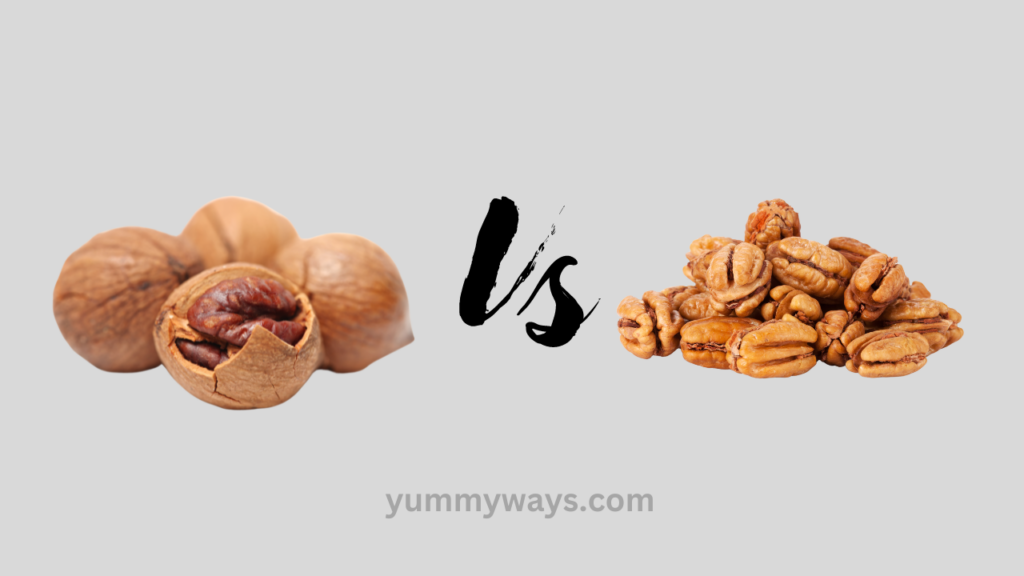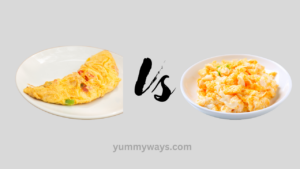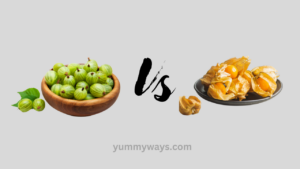Hickory nuts and pecans have distinct flavors and textures, making them unique in taste and culinary uses. Delving into the differences between hickory nuts and pecans reveals two nuts with contrasting flavors, textures, and uses.
Hickory nuts, known for their rich and smoky flavor, have a distinctly oily texture. They are commonly used in baking and cooking, lending a savory twist to dishes. On the other hand, pecans boast a sweet and buttery taste with a softer texture, making them a popular choice for snacking, baking, and garnishing dishes.
Both nuts offer a range of health benefits, including high protein and healthy fat content. So, whether you are seeking a smoky kick or a sweet indulgence, hickory nuts and pecans are sure to cater to your taste preferences.
Contents
Hickory Nuts Vs Pecans

Also Read: Pistachio Vs Walnut: Nutritional Showdown
History Of Hickory Nuts And Pecans
Hickory nuts and pecans have a rich history dating back hundreds of years. Understanding the origin and cultural significance of these nuts sheds light on their importance in various culinary traditions and their impact on different cultures.
Origins Of Hickory Nuts
The history of hickory nuts can be traced back to the indigenous peoples of North America, who revered them for their nutritional value and as a staple food source. Hickory trees, belonging to the genus Carya, are native to North America, with species found in various regions of the continent. Native Americans not only consumed hickory nuts as a food source but also used them for medicinal and ceremonial purposes. European settlers later adopted the use of hickory nuts in their cooking, incorporating them into various dishes.
Origins Of Pecans
Similar to hickory nuts, pecans also have a deep-rooted history within the Americas. Pecan trees are native to the southern United States and northern Mexico, and their cultivation dates back to the indigenous peoples of these regions. Native American tribes revered pecans as a valuable food source and traded them with other groups. The name “pecan” itself is derived from an Algonquian word, emphasizing the significance of this nut in Native American cultures. Pecans eventually became a prominent ingredient in Southern cuisine and played a crucial role in shaping the region’s culinary traditions.
Nutritional Value
The nutritional value of hickory nuts and pecans is a key aspect to consider when deciding which nut to incorporate into your diet. Understanding the differences in their macros and micronutrient content can help you make an informed choice. Let’s take a closer look at the nutritional profiles of hickory nuts and pecans.
Comparison Of Macros
To begin, let’s compare the macros of these two nuts. Hickory nuts and pecans are both rich sources of healthy fats, fiber, and protein while being relatively low in carbohydrates. However, there are slight variations in their macronutrient composition.
When it comes to fat content, pecans have a slight advantage. They contain about 72 grams of fat per 100 grams, whereas hickory nuts contain approximately 70 grams of fat per 100 grams. Both nuts are primarily composed of heart-healthy monounsaturated fats, which are known to promote a healthy cardiovascular system.
In terms of protein content, hickory nuts have a slight edge over pecans. Hickory nuts provide around 9 grams of protein per 100 grams, while pecans offer approximately 9.2 grams. While the difference may seem minimal, every gram of protein counts when it comes to meeting your daily requirements.
When considering carbohydrate content, both hickory nuts and pecans offer minimal amounts, making them suitable options for those following a low-carb or keto diet. Hickory nuts contain around 4 grams of carbohydrates per 100 grams, while pecans have roughly 4.3 grams per 100 grams.
Also Read: Why am I Craving Guacamole? A Deep Dive into Reasons
Micronutrient Content
In addition to macros, it is important to consider the micronutrient content of these nuts. Micronutrients are essential vitamins and minerals that support overall health and well-being.
Hickory nuts contain a rich array of micronutrients. They are particularly high in manganese, providing about 406% of the recommended daily intake (RDI) per 100 grams. Manganese plays a critical role in the body’s antioxidant defenses and is important for normal brain function. Additionally, hickory nuts are a good source of copper, magnesium, and phosphorus.
Pecans, on the other hand, offer their own unique set of micronutrients. They are an excellent source of vitamin E, providing approximately 30% of the RDI per 100 grams. Vitamin E acts as a powerful antioxidant, protecting cells from damage caused by free radicals. Pecans also contain notable amounts of zinc, potassium, and thiamin.
By incorporating hickory nuts or pecans into your diet, you can benefit from their respective micronutrient compositions.
Overall, both hickory nuts and pecans offer impressive nutritional profiles. Whether you favor the slightly higher fat content of pecans or the slightly higher protein content of hickory nuts, both options provide numerous health benefits. Consider including these nutrient-dense nuts in your diet to enhance your overall well-being.
Flavor Profile
When it comes to nuts, flavor is a crucial factor that can make or break a dish. Understanding the unique taste profiles of different nuts can help you create perfectly balanced, delicious meals and treats. In this segment, we will explore the distinct flavors of hickory nuts and pecans, two popular choices among nut enthusiasts.
Taste Of Hickory Nuts
Hickory nuts are known for their robust, smoky flavor that adds a delightful twist to both sweet and savory dishes. These rich-flavored nuts offer a harmonious blend of sweetness and earthiness, making them an intriguing choice for various culinary creations.
- The taste of hickory nuts is often described as slightly sweet with a hint of bitterness, similar to the flavor profile of pecans.
- However, what sets them apart is their distinct smoky essence, which adds depth to any recipe.
- The complex flavor of hickory nuts is best unleashed when paired with ingredients like dark chocolate, caramel, and even spices like nutmeg or cinnamon.
- Roasting hickory nuts can intensify their flavor, making them an excellent addition to salads, desserts, and even savory dishes like roasted vegetables or poultry.
Taste Of Pecans
Known for their buttery and sweet taste, pecans have a distinct flavor profile that makes them highly sought after and incredibly versatile in the world of cooking and baking.
- With their delicate, almost caramel-like flavor, pecans bring a wonderful richness to any dish they grace.
- The mild sweetness of pecans complements a wide range of flavors, making them a popular choice for desserts, such as pecan pies and pralines.
- Pecans work equally well in savory dishes, adding a delightful crunch and hint of sweetness to salads, roasted vegetables, and even meat dishes.
- Roasting pecans can enhance their natural sweetness, giving them a slightly more intense flavor that pairs beautifully with maple syrup or spices like cinnamon and nutmeg.
In summary, while hickory nuts offer a smoky and bittersweet flavor, pecans delight our taste buds with their buttery and sweet characteristics. Whether you’re looking to add richness and depth to a dish with hickory nuts or a touch of sweetness with pecans, both nuts have a unique flavor profile that can elevate your culinary creations to new heights.
Also Read: Apricots vs Peaches: Which One Satisfies More?
Culinary Uses
Hickory nuts and pecans are both delicious and nutritious nuts that are widely used in culinary applications. Both nuts offer a unique flavor and texture, making them popular choices for various recipes. Let’s explore the culinary uses of hickory nuts and pecans, and discover the traditional recipes that showcase their distinct qualities.
Traditional Recipes With Hickory Nuts
Hickory nuts have been a staple in traditional American cuisine, particularly in recipes that call for a rich, nutty flavor. One classic dish that features hickory nuts is the hickory nut pie, which resembles a pecan pie but with a more robust and distinctive taste. Hickory nuts can also be incorporated into baked goods such as cookies, cakes, and bread for an added depth of flavor.
Traditional Recipes With Pecans
Pecans are widely renowned for their sweet and buttery flavor, making them a key ingredient in many beloved recipes. Pecan pie is a quintessential dessert that showcases the natural sweetness of pecans, paired with a gooey, caramel-like filling. Pecans are also commonly used in savory dishes, such as pecan-crusted chicken or salads for a delightful crunch and nutty essence.
Health Benefits
Hickory nuts and pecans are not just delicious nuts that can be enjoyed in various dishes but also provide numerous health benefits.
Heart Health
Hickory nuts and pecans are both rich in unsaturated fats, which can help reduce cholesterol levels.
- Contains monounsaturated fats that contribute to heart health
- Pecans contain plant compounds like flavonoids and polyphenolic antioxidants
Brain Health
Both hickory nuts and pecans are packed with nutrients like vitamin E and omega-3 fatty acids that support brain function.
- Rich in antioxidants that protect brain cells from damage
- Omega-3s in hickory nuts and pecans are vital for cognitive function
Cultural Significance
In exploring the cultural significance of hickory nuts vs pecans, we unveil a rich history rooted in Native American traditions and contemporary symbolism. Let’s delve into the unique roles these nuts have played throughout history and in modern-day contexts.
Native American Uses
Native Americans utilized hickory nuts and pecans for sustenance and medicinal purposes. They valued hickory nuts for their nutritional benefits, while pecans were used in various culinary creations and rituals.
Modern-day Symbolism
Today, hickory nuts and pecans continue to hold symbolic significance in different cultures. Hickory nuts symbolize strength and resilience, while pecans are associated with prosperity and abundance.
Harvesting And Processing
Hickory nuts and pecans are both popular nut choices, each offering a unique flavor profile and culinary versatility. Understanding the differences in their growth, harvesting, and processing can help both growers and consumers make informed decisions. Let’s delve into the specifics of harvesting and processing these two nut varieties.
Growth And Harvesting Of Hickory Nuts
Hickory nuts are harvested from the trees of the Carya genus, which are native to North America. These trees typically reach maturity and start bearing nuts after 10-15 years. Harvesting occurs in the fall, typically between September and October when the nuts naturally fall to the ground. Native Americans traditionally used long poles to shake the trees to facilitate harvesting. Once collected, the nuts can be air-dried for several weeks to enhance their flavor and ease the husking process.
Cultivation Of Pecans
Pecans, belonging to the Carya illinoinensis species, are predominantly cultivated in the southern United States. Pecan trees take 6-10 years to begin producing nuts, with peak production occurring at around 20 years of age. Harvesting takes place from October to December. Growers can either wait for the nuts to naturally fall or shake the tree to encourage the release of the ripened nuts. After harvesting, the pecans are typically processed immediately to ensure freshness. Processing involves cleaning, cracking, and sorting the nuts to prepare them for market distribution.
Environmental Impact
When it comes to choosing between hickory nuts and pecans, it’s important to consider their environmental impact. Both nuts have their sustainability practices and can have various impacts on ecosystems.
Sustainability Practices
Hickory nuts are known to be more sustainable compared to pecans. This is because hickory trees are native to North America and are naturally adapted to the local climate and environment. They require less irrigation and pesticide usage, which reduces the overall carbon footprint.
Pecans, on the other hand, are primarily grown in regions that are not their natural habitat. They often require more water, fertilizer, and pesticide application to thrive, resulting in a higher environmental impact.
Impact On Ecosystems
The cultivation of hickory nuts can have a positive impact on ecosystems. Hickory trees provide shelter and food for various wildlife species, including birds, squirrels, and insects. Their dense canopy also helps reduce soil erosion and provides shade, creating a more stable and diverse ecosystem.
On the contrary, pecan monoculture can have detrimental effects on ecosystems. Large plantation-style pecan orchards often require the removal of diverse native vegetation, leading to habitat loss. The excessive use of water and chemicals can also contribute to water pollution and soil degradation.
In summary, hickory nuts have a lower environmental impact and promote a healthier ecosystem compared to pecans. By choosing hickory nuts, you can support sustainable practices and help preserve natural habitats.
Conclusion
Both hickory nuts and pecans offer unique flavors and nutritional benefits, adding depth and richness to various dishes. Understanding the differences between these two nuts can help you choose the most suitable option for your needs. Experimenting with both can also provide a diverse range of flavors and textures to your culinary creations.

